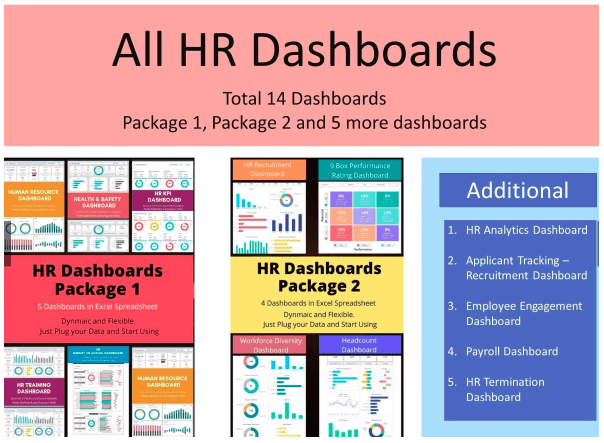
In the fast-paced and ever-evolving world of business, employee engagement stands out as a fundamental driver of success.
An engaged workforce isn’t just an asset; it’s the heart and soul of any thriving organization. Engaged employees are passionate, committed, and deeply connected to their work and the mission of the company. They don’t just clock in and out; they invest their energy, creativity, and dedication to drive the organization forward.
However, cultivating and maintaining high levels of employee engagement can be a challenging task. It’s a multifaceted concept influenced by various factors, including job satisfaction, work culture, opportunities for growth, and the quality of relationships within the organization. While traditional methods like surveys and feedback forms offer valuable insights, they may not provide a real-time, comprehensive view of engagement.
This is where employee engagement dashboards emerge as a game-changer. These digital tools are designed to capture the heartbeat of your organization, offering real-time data, visual representations, and customizable insights into employee engagement. In this first section, we’ll explore the concept of employee engagement and why it’s so vital in today’s workplace.
Understanding Employee Engagement
At its core, employee engagement is about fostering a deep emotional connection between employees and their organization. Engaged employees aren’t just satisfied with their jobs; they’re emotionally invested in the company’s vision and mission. They believe in what they do and feel that their contributions are essential to the organization’s success.
Engagement transcends mere job performance. Engaged employees take the initiative and stay innovative. They’re not just looking for a paycheck; they’re seeking fulfillment and a sense of purpose in their work.
The Challenge of Measuring Engagement
While the concept of employee engagement is clear, measuring it accurately can be challenging. It’s not a single, quantifiable metric but a complex interplay of various factors. Traditional methods of measuring engagement, such as annual surveys, have limitations. They provide snapshots of employee sentiment at specific points in time, but the insights quickly become outdated.
Moreover, the dynamics of the modern workplace are evolving rapidly. Remote work, shifting demographics, and changes in work expectations have made it more challenging to gauge engagement accurately. Organizations need real-time, dynamic tools to keep their finger on the pulse of engagement.
The Role of Employee Engagement Dashboards
Employee engagement dashboards are designed to fill this crucial gap. They offer a dynamic, real-time, and visual representation of key engagement metrics. These dashboards enable organizations to monitor, analyze, and improve employee engagement continuously. They serve as the compass that guides organizations toward fostering a motivated, connected, and high-performing workforce.
Stay with us as we delve deeper into the benefits of employee engagement dashboards in the next section, exploring how these tools can drive positive changes and elevate workplace morale.
The Benefits of Employee Engagement Dashboards
In the previous section, we laid the foundation by understanding the significance of employee engagement and the challenges associated with measuring it accurately. Now, it’s time to explore why employee engagement dashboards are invaluable tools in the modern workplace. Here are the key benefits they bring to the table:
1. Real-Time Insights
Employee engagement dashboards provide real-time data on engagement levels within your organization. This means you can access up-to-the-minute information on how engaged your workforce is at any given time. Unlike traditional annual surveys, which offer a static snapshot of employee sentiment, dashboards provide a dynamic and continuous stream of insights.
Real-time data is a game-changer. It allows you to respond promptly to any emerging concerns or opportunities. For example, if you notice a sudden drop in engagement following a significant change in the organization, you can take immediate action to address the issue, whether it’s improving communication, offering additional support, or refining your strategies.
2. Comprehensive Metrics
Employee engagement is a multifaceted concept influenced by various factors, including job satisfaction, work culture, career development opportunities, and more. Employee engagement dashboards don’t just focus on a single aspect of engagement; they offer a holistic view.
These dashboards incorporate a wide range of metrics related to engagement, job satisfaction, feedback response rates, performance data, and more. This comprehensive approach allows you to identify the specific areas that need attention. It’s like having a complete toolbox for measuring and improving engagement.

3. Visual Representation
One of the standout advantages of employee engagement dashboards is their visual nature. Data is presented in easy-to-understand charts, graphs, and infographics. This visual representation simplifies the process of interpreting engagement data for leaders, managers, and employees.
Visualizations make complex data more accessible. You can quickly spot trends, patterns, and outliers, making it easier to communicate and act on the insights provided by the dashboard. Whether you’re presenting engagement data to your leadership team or discussing it with your employees, visual representations enhance clarity and understanding.
4. Identifying Trends
Employee engagement dashboards enable you to spot trends in engagement over time. You can track changes, whether they’re positive or negative, and take proactive steps to maintain or improve engagement levels.
For instance, if you notice a consistent increase in engagement following the implementation of a new employee development program, you can consider expanding similar initiatives. Conversely, if you identify a declining trend in engagement during certain periods, you can investigate the root causes and take corrective actions.
5. Enhancing Communication
Transparency is a cornerstone of employee engagement. When employees feel informed and connected to the organization’s goals and progress, they’re more likely to engage actively.
Employee engagement dashboards promote transparency by sharing engagement data with employees. This openness fosters trust and encourages employees to voice their concerns and suggestions. It’s a two-way street where employees know that their feedback is valued, and organizations demonstrate their commitment to improvement.
6. Customization for Your Needs
Not all organizations are the same, and neither are their engagement goals. Employee engagement dashboards can be customized to align with your specific objectives and metrics. Whether you want to focus on remote work engagement, team collaboration, or leadership effectiveness, you can tailor your dashboard accordingly.
Customization ensures that you’re tracking what truly matters to your organization. Custom dashboards empower you to drive engagement initiatives that are aligned with your unique organizational culture and goals.
In this section, we’ve explored the multitude of benefits that employee engagement dashboards offer to organizations. From real-time insights to visual representations and customization, these dashboards are powerful tools for enhancing employee engagement and, in turn, workplace morale.
In the next section, we’ll delve deeper into how to implement employee engagement dashboards effectively, ensuring that they become an integral part of your organization’s engagement strategy.
Implementing Employee Engagement Dashboards
Now that we’ve recognized the immense benefits of employee engagement dashboards, it’s time to explore how to implement them effectively within your organization. Here’s a step-by-step guide to make the most of these powerful tools:
Selecting the Right Dashboard Tool
Choosing the appropriate dashboard tool or software is the first critical step. Look for a solution that aligns with your organization’s unique needs and goals. Ensure that it allows for real-time data integration, customization, and scalability.
Consider factors such as user-friendliness, compatibility with your existing systems, and the level of support and training available. The right tool should seamlessly integrate with your organization’s workflow and provide the flexibility to adapt to changing engagement priorities.

Defining Key Metrics
Identify the specific engagement metrics that matter most to your organization. These metrics could include:
- Employee satisfaction scores: Measuring overall job satisfaction.
- Feedback response rates: Gauging the level of employee participation in surveys and feedback initiatives.
- Performance data: Assessing individual and team performance metrics.
- Retention rates: Tracking employee turnover and tenure.
Clearly define your objectives and KPIs (Key Performance Indicators) related to engagement. This step is crucial in ensuring that your dashboard provides meaningful insights aligned with your organizational goals.
Regularly Monitor and Update
To harness the full potential of employee engagement dashboards, commit to regular monitoring and updates. Ensure that data is current and relevant. Create a schedule for data collection, analysis, and dashboard updates. Consistency is key to maintaining engagement momentum.
Act on Insights
Employee engagement dashboards are only valuable if you act on the insights they provide. Use the data to inform decision-making, implement changes, and continuously improve engagement. Collaborate with your HR team and leadership to develop action plans based on dashboard insights.
For example, if the data indicates a drop in engagement among a specific department, initiate a targeted intervention. This could involve conducting team-building workshops, offering additional training, or enhancing communication channels. Regularly review the impact of these actions on engagement metrics.
Encourage Feedback
Use employee engagement dashboards as a tool to encourage feedback from employees. Encourage open dialogue and make it clear that their feedback is valued.
Consider conducting regular feedback sessions or surveys to gain qualitative insights into employee experiences. Feedback is a two-way street; not only should you collect it, but you should also communicate the actions taken in response to employee input. This reinforces the message that their voices are heard and their concerns are addressed.
Elevating workplace morale through employee engagement is not just a lofty goal; it’s a strategic imperative for organizations looking to thrive in today’s competitive landscape. Employee engagement dashboards serve as the bridge between the desire to improve engagement and the actionable insights required to make a real difference.
